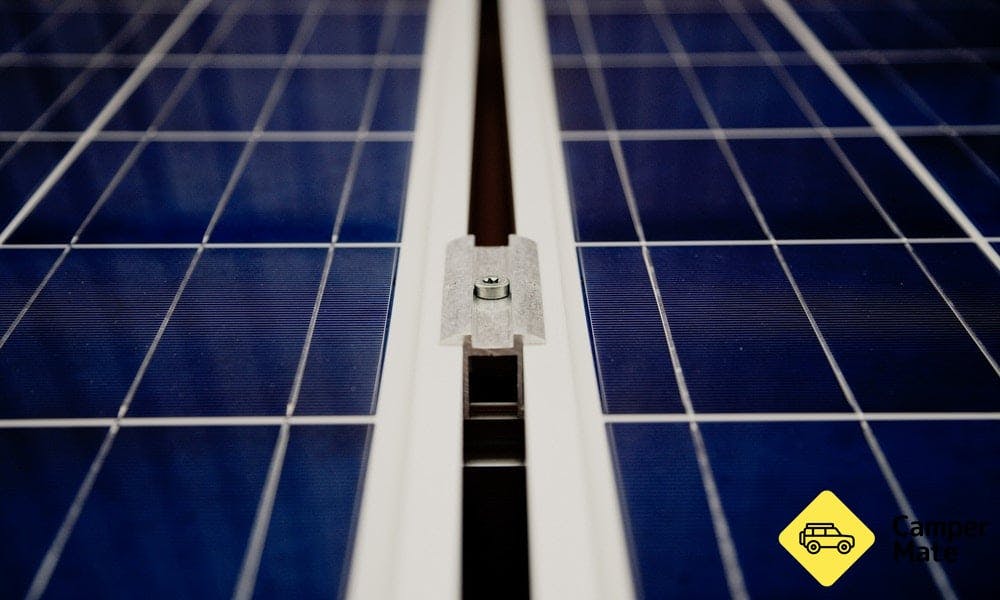
Camping
Road Travellers' Guide to Solar Power
August 1, 2017 • Corey Grigg
13 min read
Between your fridge, lights, television, heaters and fans – even charging your phone or laptop – you draw a lot of power from your battery system. The best way to offset this is through a solar power system. But once you have one, how do you best make use of the power generated?
Solar power for your RV is the best way to live off the grid while exploring Australia. It allows you to generate your own power and live off the grid longer than those without, sometimes even up to a week in an average sized caravan with a quality solar power system (depending on weather and appliance usage).
However, your solar panels are only able to capture the sun’s energy for roughly 8 hours a day. So what do you do to make the most of that time?
In this guide, we will discuss the different types of solar panels, the most efficient ways to gather the sun’s power and some energy saving tips to keep you off the grid for longer.
Fixed vs. Portable Solar Panels
The two most common types of solar panels available to road travellers are fixed and portable.
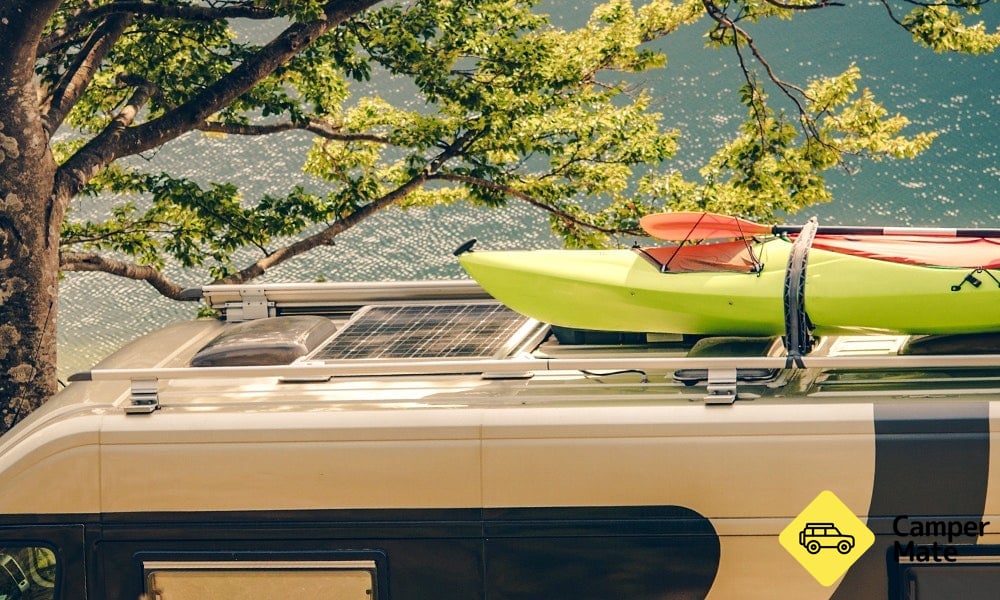
Fixed solar panels don’t obstruct other roof accessories.
Fixed solar panels are mounted onto the roof of your RV. Once installed, they are not easily removed, making them safe from thieves and adverse weather conditions. However, special considerations need to be made when mounting them and they often require professional installation. They are often more expensive than portable systems but don’t require any setup and, once installed, are constantly operating.
Portable solar panels allow you to set up your system wherever you want. They are often less expensive than fixed panels but require a place to store them and their wiring inside the RV. They can also be easily damaged in windy conditions, stolen if left unattended and require being set up and packed down for every use.
Fixed units require your RV to be parked in direct sunlight to work, while portable units can be placed in the sunlight while you are parked in the shade. Portable units have the potential to generate slightly more power than a fixed unit, as they can be moved to track the sun’s position. Fixed units remain flat on top of the roof and you may need to move your RV as the day goes on to keep it out of the shade.
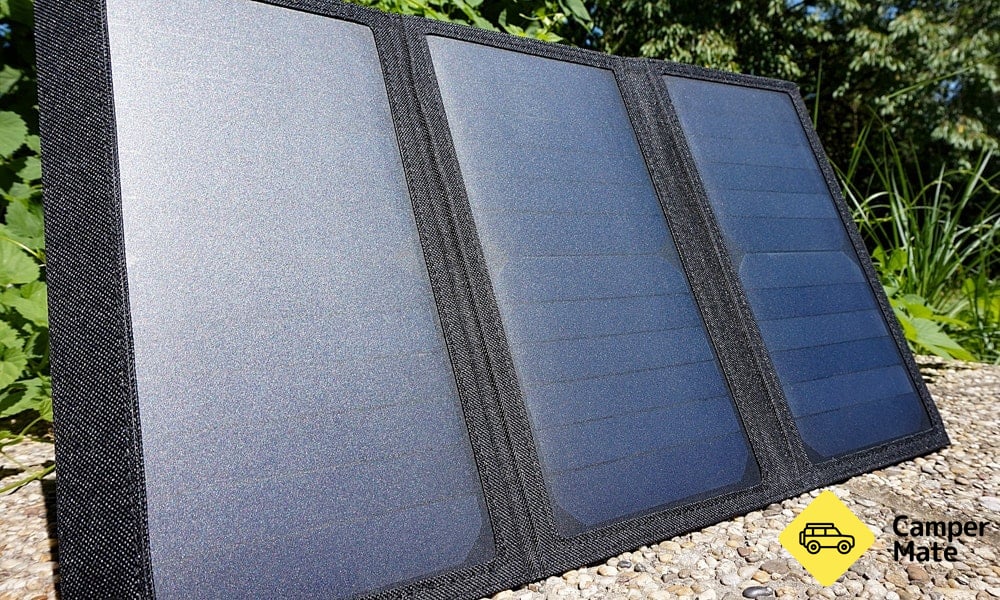
A portable solar panel lets you keep in direct contact with the sun at all times.
Regardless of whether you own a portable or fixed system, the determining factor for generating solar power most efficiently is having a clear line of sight to the sun. Leaving them in the shade not only wastes sunlight hours but makes your panels far less efficient. If you aren’t able to effectively follow the sun with your panels, leaving them to face the north is the second best way to track the sun while only losing minimal output.
Monocrystalline vs.Polycrystalline Panels
Most solar panels that you’ll find used by road travellers (whether fixed or portable) typically come under one of two categories; monocrystalline and polycrystalline.
Monocrystalline solar panels are made from thin wafers cut from crystals of pure silicon. They offer slightly better efficiency than a polycrystalline solar panel of the same size, while also costing slightly more due to the more complicated manufacturing process. However, when a section of the panel is in the shade, the ‘circuit’ of the solar panel can be broken which stops the system from generating power. Monocrystalline solar panels tend to have the longest life expectancy and operate better in low-light conditions compared to polycrystalline solar systems.
Polycrystalline solar panels are created from melted raw silicon that is cut into square wafers. By simplifying the manufacturing process, polycrystalline solar systems are the cheaper type of solar panel. However, they are slightly less efficient and require more size to create the same amount of power as a monocrystalline panel.
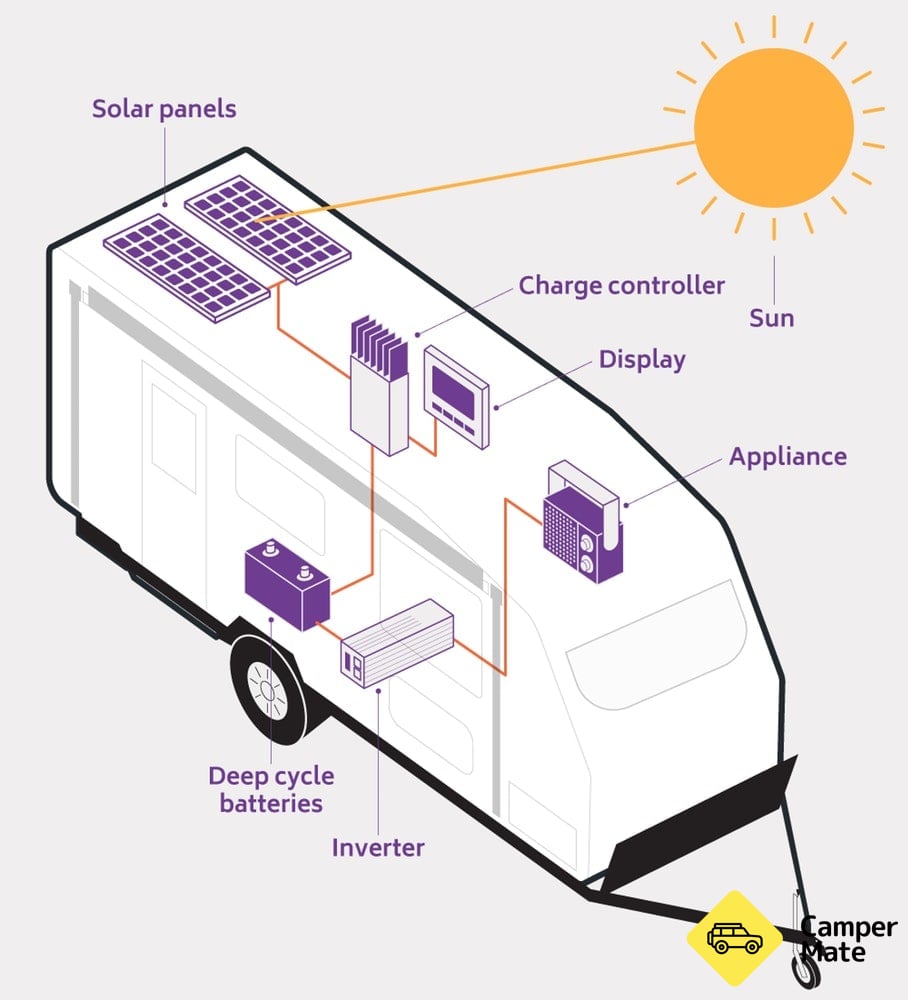
A solar power system in your caravan works similar to the one used in homes.
Most road travellers opt for a more compact monocrystalline system to maximise the limited room on their caravan, camper trailer or motorhome. Using this type of solar panel will require extra care to keep it out of the shade, where as a polycrystalline panel can be used with more flexibility.
Battery Choice
The battery you use will determine how efficiently you can store the energy generated by your solar panels. Using the wrong battery will lead to many future problems, from not being able to store enough power, to the battery’s cells collapsing under the strain of the incoming energy.
Deep cycle batteries are a special type of battery designed to be discharged and recharged constantly. Rather than outputting a burst like your car’s battery, deep cycle batteries output a consistent charge while in use. They come in four different varieties including; flooded, gel, AGM and lithium-ion. AGM (absorbed glass mat) is the most popular for RVs, as they require little maintenance and can be discharged to a lower capacity percentage before damage occurs to the cells.
Because your deep cycle battery will be in constant use with your solar power system, be sure to check the cycle rating. This determines how many times the battery can be charged then discharged before damage occurs to the internal cells. However, discharging any deep cycle battery below 50% will significantly decrease its life expectancy. If you are unsure of what size battery you need, it is best to talk to a specialist about what appliances you will be running and the capacity of your solar panels.
Time of Day
Typically, you will only get 8 or so hours per day of sunlight hours. In summer you may get more, while in winter you may get less. Your position to the equator will also determine how many sunlight hours you get too, as the closer you are, the more sunlight hours you will get. For example, in winter, Queensland will get more sunlight hours than Victoria since it is closer to the equator, even though it’s the same time of year.
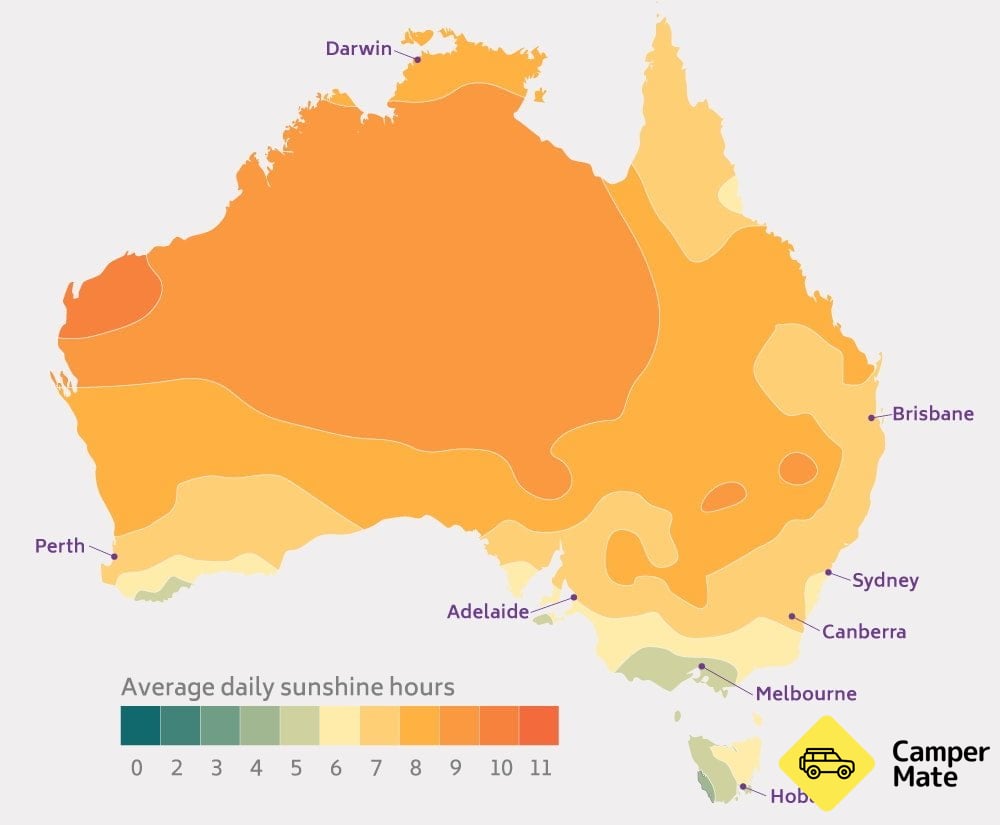
Here is a quick guide to the average amount of sunlight hours each part of Australia gets.
Discover More: the great Australian road trip
As a general rule of thumb, between 9am and 4pm are ‘peak times’ where you will generate the most solar power. Therefore, it is crucial to have your panels facing the sun at those times. This may, however, be increased to between 7am and 7pm in summer months and decrease to 10am to 3pm in winter months.
Weather Conditions
Although summer days are great for getting heaps of sunlight hours, solar panels have an optimal operating temperature of around 25 degrees. Some users have reported losses of up to 20% in their panel’s efficiency on 40+ degrees days. It’s not uncommon to find your solar panels working better on a mild spring day than on a scorching summer day, even though they spent longer in the sun.
Therefore, the only time it is suggested to keep your solar panels in the shade is on extremely hot days. You will likely produce roughly the same amount of energy as you would leaving them out in the heat, but will stop the damage happening to the solar cells in the panels.
Wind is not an issue for a properly secured, fixed solar panel but may be problematic for portable users. This may require parking your vehicle so it blocks the wind while still being able to track the sun.
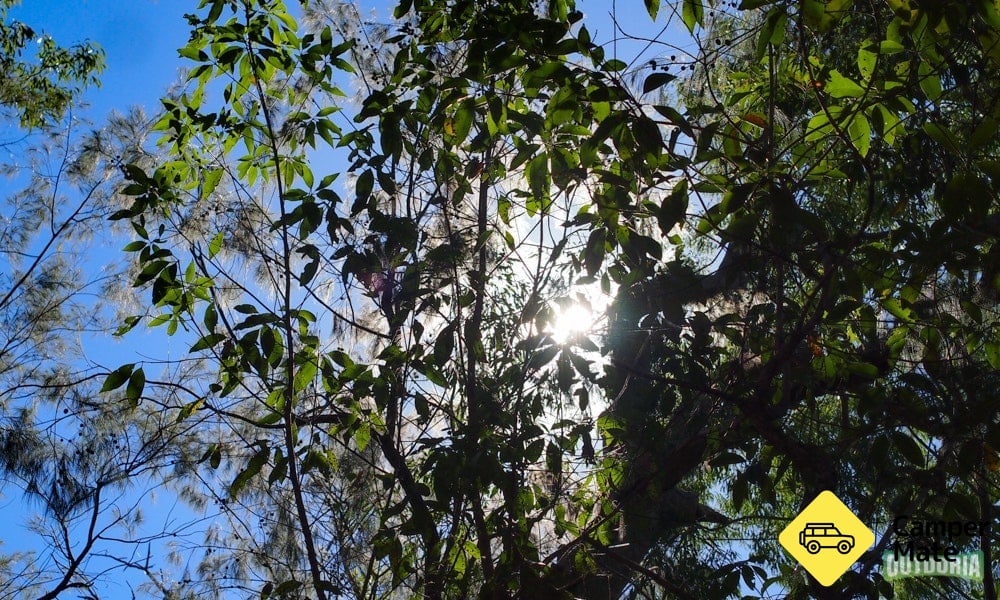
Partial shade like this isn’t ideal for your solar panels.
Any cloudy weather, including; storms, rain or fog, that stops direct sunlight from reaching your solar panels will also significantly decrease how much can be generated. You may need to connect to mains electricity or divert power from your battery to your appliances if these conditions occur.
Using an MPPT Solar Regulator
Every solar system requires a regulator. Their job is to control the voltage coming from the solar panels into your battery. A Maximum Power Point Tracking (MPPT) solar regulator takes it a step further, allowing you to not only regulate the voltage from the solar panel to the battery but will stimulate each of the solar panel’s cells to achieve maximum output.
Some MPPT regulators offer a possible increase in charging efficiency of up to 30%. They have the ability to enhance your solar panels in low light conditions and maintain the solar cells better in extreme heat.
MPPT solar regulators also prevent reverse current flow. This is when the solar panels aren’t generating power (for example at night) voltage tends to trickle back up from the battery to the panels. This stops your batteries from draining the hard-earned solar power you stored during the day and prolongs the life of your battery.
Energy Efficient Appliances and Habits
It’s all well and good to have a high-performance solar power system consisting of top-of-the-line panels, batteries, inverters and regulators, but if you are using high-consumption electronics constantly, no amount of sun will compensate for the power you will be using.
Choosing energy efficient products will reduce the load on your system and the drain from your batteries when the sun has gone down. Even simple changes to your appliance usage habits can make a huge difference to your energy consumption.
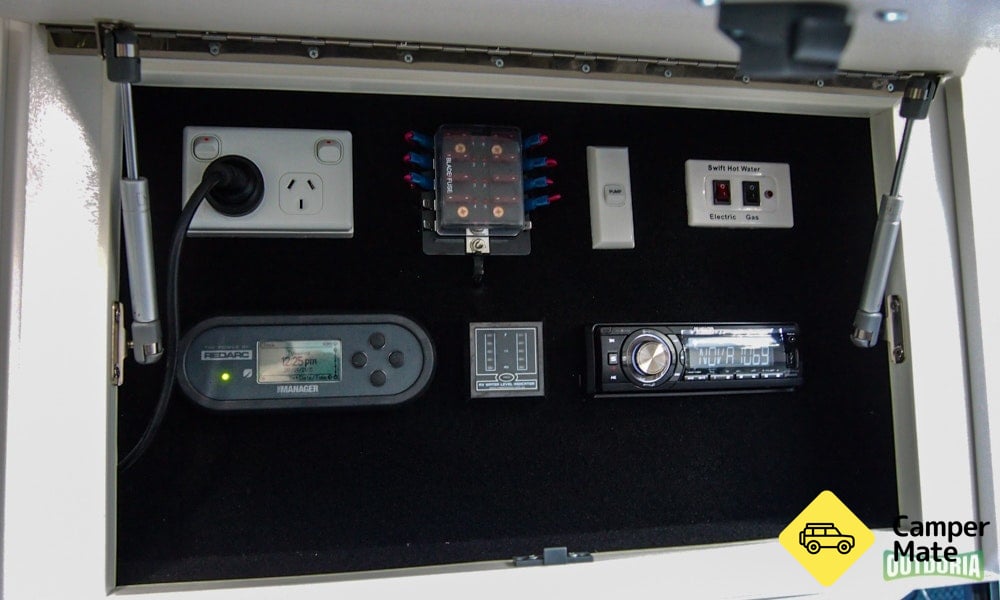
Your solar power management display will be located with the other resource monitors.
A solar power management display can be set up with the rest of your resource monitors so you can view the amount of current flowing through your solar system and into your batteries. This will also help you decide what appliances can be run and to check if your system is working at peak efficiency.
Appliances and Electronics
Reducing your energy consumption in your RV is similar to what you do at home. Switching to LED lights, using minimal hot water and only using heaters and air conditions when they are really needed are some of the easiest ways to save power.
When looking for energy efficient appliances, in particular white goods, check the star rating located on the front of the device. The energy star rating is an internationally recognised scale that shows how efficient a product is to run. For example, each rated star a dishwasher reduces the energy and water usage by 30%. In this case, a five-star dishwasher is 60% more efficient than a three-star one.
The minimum suggested star ratings when looking for energy efficient white goods as follows:
- Washing Machines = 3.5 stars
- Dryers = 2.5 stars
- Dishwashers = 3.5 stars
- Refrigerators = 4 stars
- Freezers = 3.5 stars
- Hot Water Systems = 5 stars
- Lighting = 4 stars or LED globes
- Air Conditioning = 4.5 stars
- Heating Systems = 4.5 stars
Use these recommendations as a guide to when you're buying energy efficient appliances for your RV. As a rule of thumb, anything over 3.5 stars is seen as energy efficient.
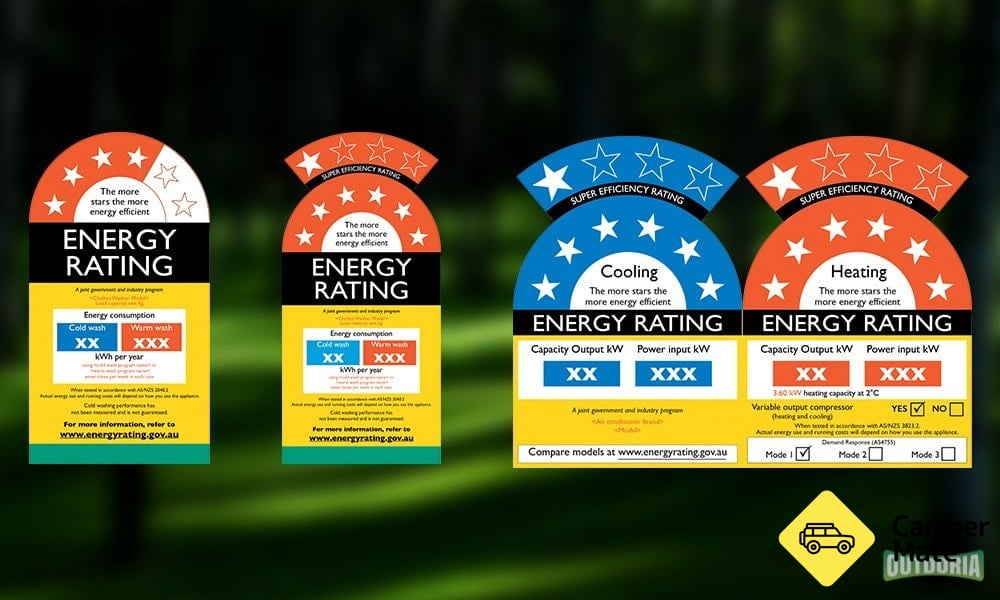
An example of what the energy star rating looks like
Energy Saving Habits
Simply changing your habits can lead up to an 80% reduction in your energy usage. Easy changes to your routine include:
- Only using ‘high-consumption’ appliances like microwaves, dishwashers, washing machines, hair dryers, kettles and electric stovetops while you are generating solar power, rather than feeding off the battery in off-peak sunlight hours
- Appliances that require ‘heating up’ such as kettles, hair dryers, heaters and microwaves are some of the least energy efficient products people regularly use. When possible use these appliances sparingly.
- Using your windows, curtains, skylights and vents to help regulate the internal temperature of your caravan instead of an air conditioner or heater can save massive amounts of power. Opening windows and vents will circulate air flow when it’s hot, while closing curtains will help retain heat inside the cabin.
- Opting for ‘manual’ appliances such as brooms and hand pumps over their electric counterparts, like vacuum cleaners and air compressors, will help conserve small amounts of power over a long time.
However, the easiest way to conserve your power is to not use it at all! From keeping all lights turned off to drying items on the line instead of in a dryer, wearing more or less clothing to keep you at a comfortable temperature and even playing board games instead of watching TV are easy ways to save power.
Alternative Energy
Although solar power and electricity will be your main source of power, using refillable LPG gas cylinders to operate your stove, heating and hot water systems is a cheap method of preserving solar power on low output days. Depending on the size of your cylinders, most can last the average road traveller up to a week of fairly consistent use. Using LPG every now and again instead of solar saves energy for other appliances that can’t use LPG.
LPG also provides a good ‘Plan B’ option for when you have multiple days of low-output weather and your solar system isn’t generating as much as normal.
Powered Sites
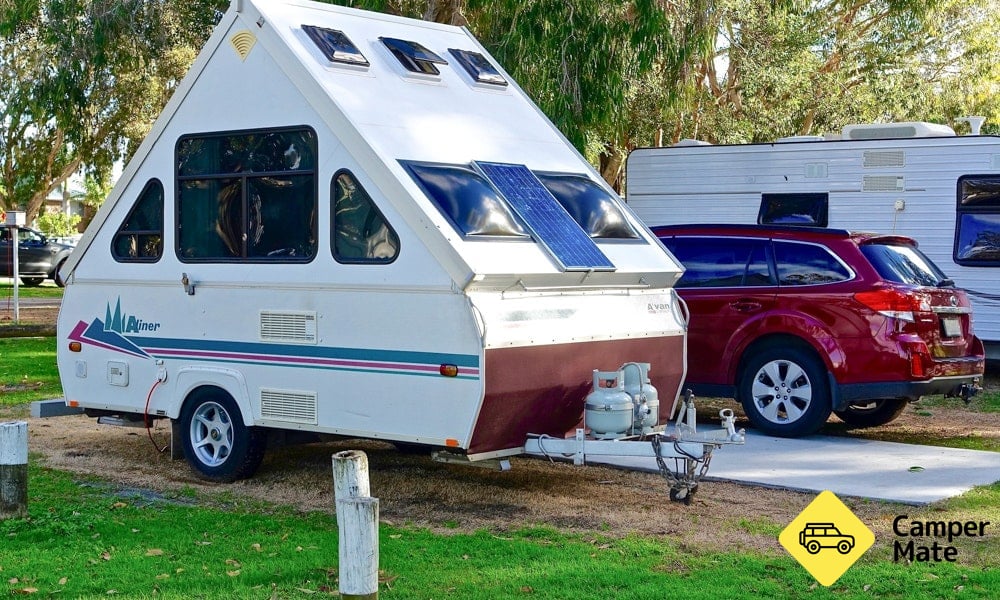
Recharge yourself while you recharge your caravan at a powered site.
It’s very rare that a solar power system will be able to generate enough electricity to consistently power all your appliances without draining or damaging the battery. Therefore, most people use their solar system to prolong the amount of time they can stay away from powered sites and mains electricity. Most travellers using a fairly efficient solar system with high-capacity deep cycle batteries are able to avoid recharging for up to a week.
However, it is recommended to recharge your batteries using mains electricity every now and again to help extend the life of your battery’s cells. Stopping at a powered site also allows you to restock supplies, catch up on the latest news and socialise with other road travellers.
Summary
Solar power is a daunting subject. Between panel positioning, heat, the type of solar panel and how many sunlight hours you get, there are so many factors that determine how much power you can generate using a solar system. Even once you have captured the energy, using it in an efficient manner is equally as tricky.
Like most things in life, the more you spend on a high-quality solar system, including panels, inverters, regulators and batteries the more power you will generate. It’s a similar thing when choosing appliances – the higher the energy star rating, the less power it will use from your hard earned solar power.

